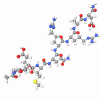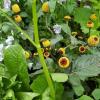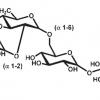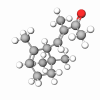Hydrolyzed Beta-Glucan is a mixture of oligosaccharides, a high-efficiency ingredient with a controlled molecular weight of between 1 and 15 kilodaltons. It is a colorless to pale yellow liquid composed of glucose and the somewhat rarer sugar talose. Its production involves the exotic bacterium Burkholderia caribensis, which is extracted from the unique soil vertisol from Martinique.
Hydrolyzed Beta-Glucan is capable of stimulating filaggrin and aquaporin-3 synthesis. The influence of this oligosaccharide on filaggrin synthesis has been studied in vitro on human keratinocytes. This was done by treating the fibroblasts with 10 mg/ml Hydrolyzed Beta-Glucan for five days, and A tenfold increase in filaggrin synthesis was exhibited. This result has also been reproduced in an ex-vivo study.
A volunteer study observed a repair effect on the skin barrier within 48 hours of applying a 1% Hydrolyzed Beta-Glucan formulation. 19 volunteers of an average age of 50 took part in the study. The skin barrier of the forearms was damaged by tape stripping on days 2 and 3. The cream containing 1% Hydrolyzed β-Glucan (or a placebo formula) was applied twice daily over three days.
The repair effect was measured by measuring the transepidermal water loss (Vapormeter). Transepidermal water loss was measured before and after stripping and applying the cream. Hydrolyzed Beta-Glucan restores the skin’s barrier function after damage to the top skin layer.









